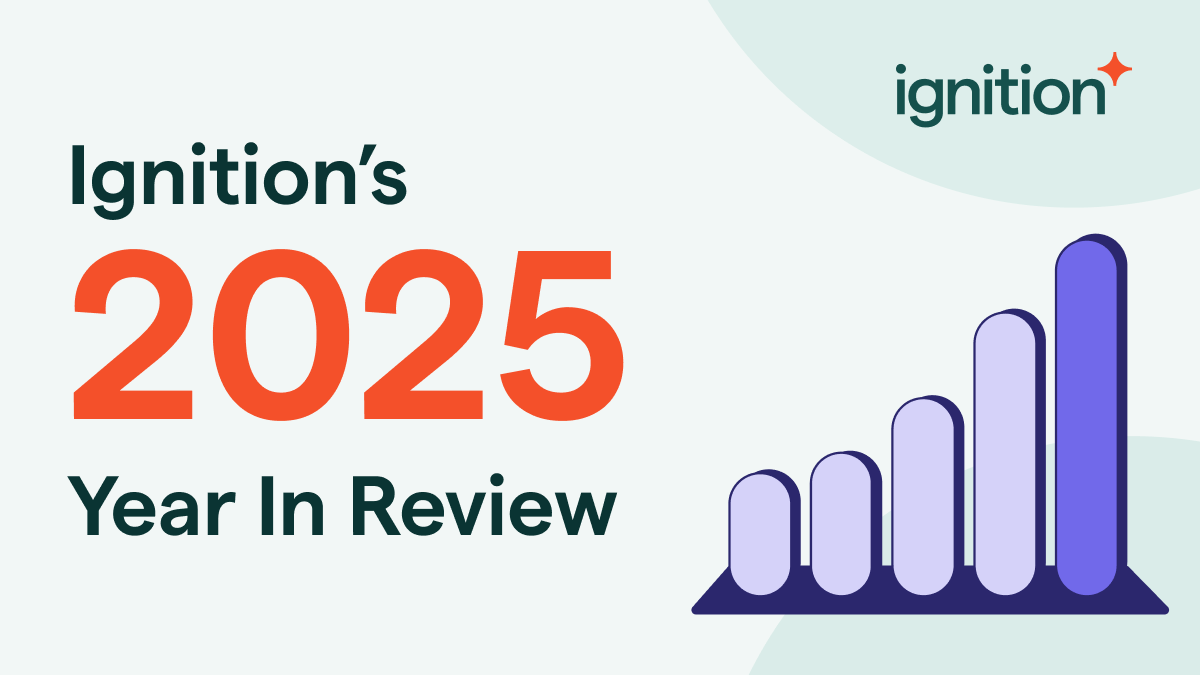The business guide to scalable operational efficiencies
Operational efficiency is how businesses streamline processes and workflows so they can focus on increasing their output.

As your business grows, bringing in new clients can create some scaling challenges. Your sales team might hit a few bumps keeping onboarding smooth, which can lead to delays and frustration—sometimes even before a working relationship really kicks off.
Growth is great, but it can lead to lost revenue fast if your operations don’t keep up. That’s where operational efficiency comes in. It’s the secret to scaling successfully, helping you avoid clunky workflows or processes that could slow you down.
Key takeaways:
- You need operational efficiency for scalable growth. Efficient operations help your business grow without losing productivity, revenue, or quality.
- Finding ways to overcome inefficiencies helps you lower operating costs, maintain strong employee engagement, and improve the customer experience—resulting in scalable growth.
- Identifying inefficiencies means you can tackle them before they become bigger problems for your company.
- Efficient infrastructure is a key part of scalable growth. Automation tools offer convenient ways to streamline business operations.
- Performance metrics and KPIs give you concrete ways to measure operational efficiency, helping you determine where to make adjustments as needed.
- Improving operational efficiency is a continuous process, not a one-time activity.
What is operational efficiency in business?
Operational efficiency is all about delivering your product or service in a cost-effective and timely way—without letting quality or customer satisfaction slip.
It’s designed to cut down on waste, boost productivity, and increase revenue. Think of it as a piece of the larger business efficiency puzzle, where everything runs a little smoother and smarter.
What do efficient operations look like?
Let’s take a look at a real-world example that illustrates operational efficiency in action. Global recruitment company Pavago struggled with clunky onboarding and payment processes, often needing manual follow-ups that frustrated clients and slowed growth.
Pavago switched to Ignition to simplify these processes and tackle inefficiencies. The company now uses the platform’s contract and proposal templates to streamline onboarding and automated billing features for more efficient payment processes.
The results? They saved hundreds of hours in just six months and cut accounts receivable by 50%. Manual follow-ups are now a thing of the past—and their operations are running a whole lot more smoothly.
Businesses with similar wins include:
- Digital Tank Marketing Agency: Went from completely manual, inefficient billing to a streamlined, automated process.
- Steadfast Bookkeeping: Transformed their process by eliminating manual proposals and time-consuming billing.
- ATO SmartDocs: Replaced admin-heavy manual tasks with automated client management and billing processes.
Overcoming operational inefficiencies supports scalable growth
Pain points like multi-step onboarding or manual data entry can really hold you back. But fixing these issues can make a big difference—not just to your bottom line, but also to less tangible areas like client satisfaction and team morale.
Lower operating costs
Boosting operational efficiency can seriously reduce waste and make sure your resources are being put to good use. You get more done without spending more, which drives better productivity and profits.
When your costs are in check and your resources are optimized, it’s much easier to expand sustainably without letting higher overhead eat into your margins.
Improve the customer experience
Inefficiencies can lead to a drop in service quality or longer delivery timelines, resulting in a poor client experience that inhibits growth. But efficient operations help you speed up delivery timelines and improve service quality.
Improving the client experience helps build loyalty, but it also encourages clients to refer your services to others. With scalable systems in place, you can maintain service standards even as your client base grows.
Strengthen employee engagement
Operational inefficiencies can take a toll on employee satisfaction, creating frustration or confusion during day-to-day tasks. On the other hand, boosting efficiency leads to smooth processes and workflows and higher employee morale.
Employees who are more satisfied with their jobs tend to be more productive and focused on performing quality work. And engaged employees are more likely to contribute to innovation, quality, and service—all essential for sustainable growth.
9 tips to improve operational efficiencies as your business scales
Improving efficiency doesn’t happen all at once—it’s a continuous process. As your business scales, take some of our top tips on board to help your teams align and stay on track for success.
1. Identify opportunities for improvement
Don’t wait for inefficiencies to impact business growth. Evaluate workflows and processes regularly to identify them before they cost you revenue or growth.
Client management and revenue workflows are common problem areas for service-based businesses. Automating tasks like proposals, billing, and renewals can eliminate manual effort and reduce errors.
Ignition’s end-to-end client lifecycle platform helps surface bottlenecks and bring visibility to your processes.
Eliminate silos
Silos between teams can cause communication gaps and other slowdowns that make it harder for your business to successfully scale—like invoicing delays or problems in sales-to-service handoffs. Getting rid of silos helps ensure seamless business growth as all teams in your organization work together more efficiently.
By consolidating tools for proposals, billing, and workflows into one platform, you can improve collaboration and keep everyone aligned.
Alleviate bottlenecks
Professional services businesses often face bottlenecks in billing and payment or client onboarding.
Using manual processes to send invoices and collect payments can lead to financial constraints and payment delays that make business growth more difficult. Likewise, getting clients through the onboarding process might involve several complex or tedious steps that frustrate you and your clients.
Making processes and workflows more efficient helps eliminate these issues and supports scalable growth. Ignition’s upfront billing tools make it simple to collect payment at contract signing, reducing delays. Features like bulk proposal creation and automated renewals also help avoid operational backlogs.
2. Outline a scaling plan
A scaling plan gives you a clear roadmap for growing your business in a sustainable way. It helps you expand without running into major cash flow issues or seeing a drop in quality. With a plan in place, you can stay focused on working toward long-term goals instead of constantly putting out fires.
Start your scaling plan with a list of clear business goals and growth strategies, like attracting a certain number of new clients or increasing revenue by a set percentage. Your goals should be SMART: specific, measurable, achievable, relevant, and time-bound.
From there, take a close look at your current operations and processes to spot any inefficiencies. Where do things need to improve in order to meet those goals? Once you’ve got that figured out, it’s time to determine what resources you’ll need to support that next stage of growth—whether that’s investing in new software or adding more people to your team.
3. Support your workforce with employee training
As your business evolves, your team’s skills need to evolve too. Employee training ensures your staff can keep up and continue delivering great service.
Cross-functional training, like job rotations, can make your team more adaptable. Employees learn new tasks and roles this way, making them more flexible. You may also need to train employees to use new platforms or software your company adopts to streamline processes and accommodate growth.
For businesses looking to grow, Ignition offers a solution to help ease training burdens. This end-to-end client lifecycle platform provides an intuitive interface and onboarding support to help teams ramp up productivity faster.
4. Invest in efficient infrastructure
Your infrastructure—everything from IT systems to office space—needs to support growth. If your current setup is already under strain, it’s time to make upgrades.
Is your network already struggling with your current workload? You’ll need to upgrade if you want to expand your client base. What about your offices—do you have space for the new employees you’ll need?
Likewise, having streamlined HR and training processes allows you to bring new employees up to speed fast as your business grows. The goal is to develop scalable systems that accommodate increasing workloads while maintaining quality and keeping costs from skyrocketing.
Implement automation tools
Automation helps streamline operations by handling repetitive tasks like billing or client communications, freeing your team up for higher-value work.
Ignition offers tools that support scalability, including:
- Proposal templates and bulk proposal creation for faster client onboarding
- Automated recurring billing and fee collection that easily scales as client volume grows
- Forms and prospect pipeline management to streamline pre-sales workflows
- Integrations with cloud ledgers and CRMs (via Zapier) for scalable reporting and reconciliation, and the removal of duplication
- Custom branding and email workflows to scale client communications without losing the personal touch
Ready to scale your business efficiently?
Get effortless contracts and improved efficiency with Ignition
5. Streamline communications
Poor communication can reduce customer satisfaction and team productivity, slowing business growth. Team members might miss deadlines or not understand what’s expected of them. Slow responses or constant back-and-forths can give your customer base a negative impression of your business, causing them to lose trust.
Using communication tools like Ignition’s automated email workflows makes it easier for teams to work efficiently. Plus, the platform’s proposal tracking and branded communication features help ensure professional and timely communications with clients.
6. Prioritize sales and customer service
When your team is tied up with admin tasks, it’s harder to focus on building strong client relationships. Automating repetitive tasks lets your sales and service teams focus on what matters: nurturing leads and delivering excellent support. Additionally, having highly responsive customer service and sales teams helps improve the customer experience, paving the way for increased revenue streams and growth.
Platforms like Ignition allow you to automate admin-heavy tasks like contract writing, so your sales team can prioritize nurturing leads, exploring new markets, and providing high-quality service.
7. Assess financial strategies
The way you manage finances can either help or hinder your growth. Take a step back to review your strategies and find ways to improve cash flow and long-term planning.
Ignition also offers features like upfront, tiered pricing in proposal templates and dashboards with granular revenue visibility to enhance financial planning and give you a clearer picture of where your business stands.
8. Measure performance
Tracking the right metrics helps you understand how efficient your operations are and where you can improve. With the right data, you can make confident decisions that support your growth goals.
Key metrics and KPIs
To measure operational efficiency, consider using the following metrics and key performance indicators (KPIs):
- Revenue growth rate (RGR): How much your revenue has increased over a specific time period
- Customer lifetime value (CLV): The amount of profit you can expect to make from a client while they use your services
- Customer and employee retention rates: How many customers return to your business and how many employees stay with your company
- Profit margins: How much profit your company makes on your services
- Net promoter score (NPS): Quantifies customer loyalty
- Cycle time: Time to complete a service or project from start to finish
- Capacity utilization rate: How much of your available resources your business is using
- Days sales outstanding (DSO): Key accounts receivable (AR) metric for financial health and payment speed
9. Focus on continuous improvement
Operational efficiency isn’t a one-and-done effort. It’s something you need to revisit regularly. Keep a close eye on your key metrics so you can spot and fix issues early. That way, small problems won’t turn into major obstacles that prevent growth and impact business performance. So it’s a good idea to continuously track the operational metrics listed above (and others), as sudden or sustained drops are often the first sign of potential inefficiencies.
Grow your revenue and strengthen business scalability with Ignition
Sales, billing, and payments are a core focus for your small business as it grows. Each of these directly impacts your company’s cash flow, making it important to ensure they support scalability instead of hindering it. Without efficient and scalable systems in place, you can easily end up with missed opportunities for growth—or chaos when growth happens.
Ignition delivers repeatable, scalable client engagement workflows via automated features that replace time-consuming admin tasks. Instead of getting bogged down by busywork and clunky, manual processes, your teams can focus on scalable growth and operational excellence.
Ready to scale your business sustainably?
Optimize and automate your workflows with Ignition.


